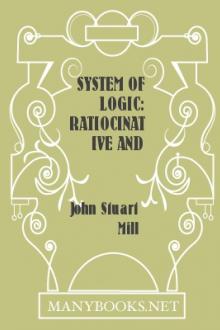Notes Of A Dead Man Sequel (Notes - #3) by Clive Cooper (best contemporary novels .TXT) 📖

- Author: Clive Cooper
Book online «Notes Of A Dead Man Sequel (Notes - #3) by Clive Cooper (best contemporary novels .TXT) 📖». Author Clive Cooper
That's day 1 (Reminds for the book Day One (I forgot the author name), but the book was for the cyber place and kinda about a chaos.
KnowledgeTime for Science!
Chapter - 5
Animal Sex: How Bed Bugs Do ItBy Joseph Castro, Live Science Contributor
Common bedbugs (Cimex lectularius) have some painful mating behaviors, including traumatic insemination.Credit: photowind/Shutterstock
For some people, the mere idea of a bed bug infestation can be shudder-inducing. But if bed begs' penchant for feeding on your blood while you sleep isn't enough to get your skin crawling, know that the sexual behaviors of these tiny, parasitic insects are even more cringe-worthy.
Though bed bugs have been making headlines since the early 2000s, they've been pestering people for thousands of years. "They were originally pests of bats in caves and when humans moved in, we kicked the bats out," said entomologist Dini Miller, a professor of urban pest management at Virginia Tech. Bed bugs started to feed on people, who transported the parasites out into other environments.
Today, bed bugs jump from home to home the same way they've done in the distant past: by hitching a ride on people's things, such as clothes and bags. Just one breeding pair — or even a single female that's already mated — can create a whole new infestation. [Bed Bugs: The Life of a Mini-Monster (Infographic)]
Advertisement
Bed bugs breed year-round, but there seems to be some seasonal variation. "We do know that populations seem to double and triple in summer months," Miller told Live Science, adding that high moisture levels due to humidity may be involved in these population spikes. "Or maybe they just feel sexier."
While in a house or apartment, the insects tend to hide together in shelters called harborages, such as in the cracks and crevices of furniture, wallpaper and box springs. They'll become active at night if they sense people or animals breathing. "When [carbon dioxide] increases in the atmosphere, that lets bed bugs know that food has arrived," Miller said. "It's like smelling bacon at a distance." The bugs will wander around in search of a blood meal, and if they come within 3 feet of such a meal, they can zero in on body heat.
Bed bugs will gorge on blood for up to 10 minutes, filling themselves up with enough blood to last for 3 to 7 days. Feeding puts the insects — especially mature males — in the mood to mate. Once back at the harborage, males will try to mate with mature females, other males, and even immature bed bugs (nymphs), Miller said.
Mating among bed bugs is an unromantic — if not horrific — affair.
Bed bugs have no courtship rituals. What they have, instead, is a type of mating behavior called traumatic insemination. That is, a male will simply climb onto a female, stab her in the side of her body with his hypodermic penis, and release his sperm into her body cavity. Over the next several hours, the sperm will migrate to the female's ovaries.
Interestingly, females have evolved a counter-adaptation to better handle traumatic insemination: a kind of secondary genital structured called a spermalege, which contains elastic proteins and is located in an area of the abdomen that males most often penetrate. These proteins, called resilins, make it so that the spermalege is easier for males to puncture, resulting in less body damage and fluid loss for the female. Males don't have a spermalege; rather, they release an alarm pheromone (acting as a mating stop sign) when another male tries to mate with them.
Still, traumatic insemination wounds the female, leaving scars. Because of this painful and dangerous mating behavior, a female will leave the harborage and seek shelter elsewhere after being stabbed by several males, Miller said.
Mating with more than one male is not beneficial to the female anyway, as a single male can provide her with enough sperm to lay several fertilized eggs daily for up to 10 days. What's more, females that mate only once — and are not subjected to repeated stabbings — produce up to 25 percent more eggs than those that mate repeatedly, Miller said.
After laying all of her eggs, the female will need to feed and mate before being able to reproduce again. Depending on who's around, the female may even mate with her own offspring. Though, in contrast with most other animals, inbreeding in bed bugs does not appear to be genetically detrimental.
Were Humans to Go Extinct, Should the Species Be Revived?
By Laura Geggel, Senior Writer
Mammoths tusks and jaws sit in front of the panels (from left to right) — Henry (Hank) Greely, Beth Shapiro, Gregory Kaebnick, George Church, Ross MacPhee and Neil deGrasse Tyson.Credit: Copyright R. Mickens/AMNH
NEW YORK — If humans were to go extinct, would it be ethical to revive the species, to allow us to live once more on this blue planet?
It's a tough call, but maybe not, according to a panel of five experts who debated "de-extinction" during the annual Isaac Asimov Memorial Debate at the American Museum of Natural History (AMNH) in New York City on Wednesday (March 29). Astrophysicist Neil deGrasse Tyson, director of the AMNH Hayden Planetarium, moderated the debate, which honors Isaac Asimov (1920-1992), a biochemist and science-fiction writer who famously wrote the "three laws of robotics."
Were another intelligent life to de-extinctify humans, would they put us in a zoo-like environment? For a sentient being, that would be "extremely frightening and scary," said panelist Greg Kaebnick, a research scholar at the Hastings Center, an independent bioethics research institute in Garrison, New York. "The animal welfare concerns just get overwhelming." [6 Extinct Animals That Could Be Brought Back to Life]
Advertisement
Then, to further muddy the waters, Kaebnick asked, "Do we deserve to be brought back?"
Yes, we do, said panelist George Church, a professor at Harvard University and the Massachusetts Institute of Technology, who is working on reviving bits and pieces of the woolly mammoth. But then again, Church, a geneticist, molecular engineer and chemist, has often opined that the science of de-extinction is already here or within reach, and should be pursued.
The panelists (from left to right) — George Church, Neil deGrasse Tyson, Beth Shapiro, Henry (Hank) Greely, Ross MacPhee and Gregory Kaebnick — stand in front of a thylacine, an extinct marsupial from Tasmania also known as the Tasmanian tiger.Credit: Copyright R. Mickens/AMNH
The panel grappled with the issues of de-extinction for more than 2 hours, discussing not only logistics but also ethical quandaries. Logistically, scientists need an animal's entire genetic code to bring it back. But this can be a challenging task: The oldest authenticated DNA is from the bone of a 700,000-year-old horse found in Yukon, Canada, said panelist Beth Shapiro, who co-wrote a 2013 study about the horse in the journal Nature.
It's difficult to get authenticated DNA from extinct animals, even those younger than that horse, including the mammoth, thylacine (a marsupial from Tasmania that's also called the Tasmanian tiger), dodo and passenger pigeon, Shapiro said. But Church disagreed, saying that there are ways to move forward.
Researchers could either find DNA in these animals' frozen nuclei, or re-create "a successful approximation" of the genome through DNA modification, Church said at a roundtable discussion later that evening.
"These are exponential technologies that improve very, very quickly and have many biomedical uses, like transplants," Church said. "I have no particular reason to doubt that we could make all of the genetic and epigenetic changes we will want to if we wanted to bring back an entire genome."
However, Church's comments were met with disbelief from some of the other panelists. Epigenetic changes are external influences on the genome that can change how much or little a gene is turned on or off, and could be difficult to modulate in a de-extinctified animal.
Lawful look
Even if the science will one day be possible, the legal framework addressing de-extinction is murky at best. If the "resurrected" animal is not a perfect copy, would it be considered the same species? Would it immediately be classified as an endangered species?
Moreover, what if its environment, microbiota (bodily bacteria) and food sources no longer exist? How many animals of a species should be brought back, so that they can have genetic diversity and mate on their own? When does human responsibility toward these revived animals end? [WipeOut: History'sMostMysteriousExtinctions]
"I think one of the toughest moral issues about de-extinction is animal welfare. How many maimed, deformed, stillborn, quasi-mammoths, quasi-elephants is it worth to bring back a sort of mammoth?" asked panelist Henry (Hank) Greely, a professor of law at Stanford University. "There are actually laws in this country, the Animal Welfare Act, that deal with some of those issues."
In addition, why not spend that money for de-extinction efforts instead on saving still-living animals, the panel asked.

De-extinction is a dangerous road, said panelist Ross MacPhee, the curator of mammalogy and vertebrate zoology at the AMNH. For instance, it's hard to know what ramifications an extinct animal will have on modern ecosystems, he said.
Rather than use science to bring back extinct animals, perhaps researchers could use these technologies to design bacteria that would






Comments (0)